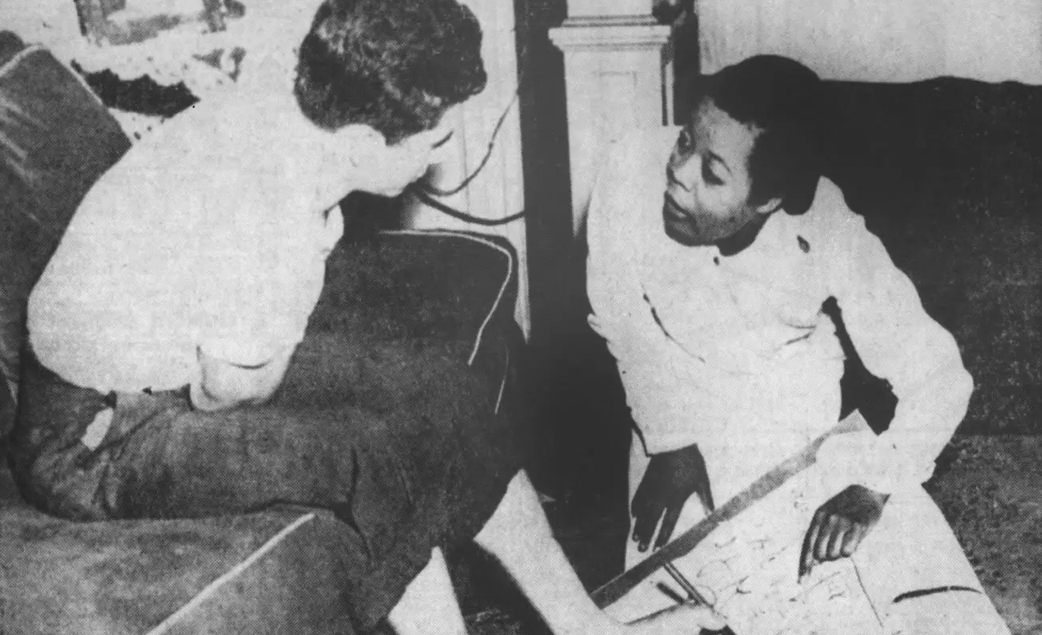Bessie Blount: The Generous Black Inventor Who Revolutionized Assistive Devices For People With Disabilities

World War II nurse and inventor Bessie Blount is best known for creating a device for disabled veterans to feed themselves. Not only did Blount give away her invention, but her work spearheaded the development of assistive devices for people with disabilities for years to come.
Who is Bessie Blount?
Bessie Blount Griffin was born in Hickory, Virginia, in 1914. She attended Diggs Chapel Elementary School, established at the end of the Civil War, to educate the children of free Black people, formerly enslaved people, and Native Americans.
Blount’s early determination and resilience became evident at seven when a school teacher hit her across the knuckles for writing with her left hand. Undeterred, she taught herself how to write fluently with both her hands, feet, and teeth.
“If it was wrong to write with my left hand, then it was wrong with my right hand,” she told The Virginian-Pilot newspaper in 2008.
Continuing her pursuit of education, Blount graduated from university as a licensed physiotherapist. However, her life took a significant turn during World War II when she volunteered with the Red Cross’s Gray Ladies at Base 81, utilizing her nursing skills to support the war effort.
In her sixth grade, Blount was forced to stop her education and decided to continue to self-study with the aim of earning an equivalent of today’s GED, which qualified her for college entrance.
Continuing her education, Blount graduated from university as a licensed physiotherapist. However, her life took a turn during World War II when she used her previously acquired nursing skills as a volunteer with the Red Cross’s Gray Ladies at Base 81.
Her work there brought her in contact with hundreds of injured soldiers, many of whom had received amputations. Blout helped the soldiers to learn to write with their feet and teeth, just as she had done as a child.
Inventing a self-feeding device
Blount learned to draw in her spare time, enabling her to design many devices for disabled people, she told the Afro-American newspaper in a 1948 interview.
“After coming in contact with paralyzed cases known as diplegia and quadriplegia, I decided to make this my life’s work,” she said.
Blount’s inspiration for a feeding device arose from a conversation with a physician at the Bronx Hospital. She learned that the army had been trying to produce a viable self-feeding device without success.
After five years of work, she built a creation to allow people greater control of their feeding.
To use it, a person only needed to bite down on a switch, delivering a mouthful of food through a spoon-shaped tube. The device would shut off automatically between each bite, allowing time to chew.
After three years of trying to gain the army’s interest in the device, Blount found a Canadian company willing to manufacture it. She eventually found a home for her invention with the French military in their hospitals.
Her legacy: Independent Living
The device was groundbreaking, and following the signing ceremony in France, over 20 new patents for assistive devices for people with disabilities were filed with the US government. As a result, Blount is thought to have paved the way for the myriad of devices and tools that promote independent living for people with disabilities today.
When asked why she had given away such a valuable invention, she said that her aim wasn’t money; it was making a point about the abilities and contributions of Black women.
“Forget me,” she said. “It’s what we have contributed to humanity – that as a Black female, we can do more than nurse their babies and clean their toilets.”
Blount’s eclectic career also involved working as a forensic handwriting and document analyst, and she is thought to be the first Black woman to have trained at Scotland Yard in the Document Division in 1977. She was also a newspaper columnist, business owner, and vocal advocate for children, veterans, animals, women and human rights.
Bessie Blount died on December 30, 2009, in Newfield, New Jersey, at 95 years of age.
Image Credit: The New York Times



